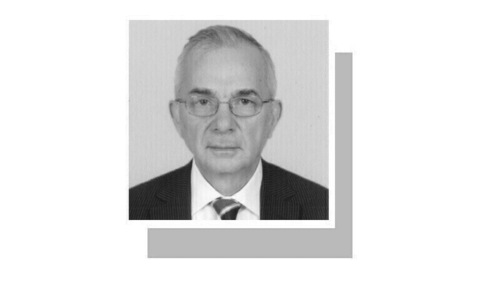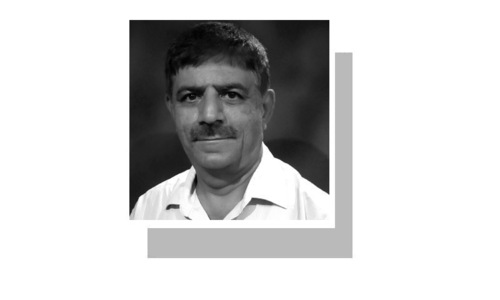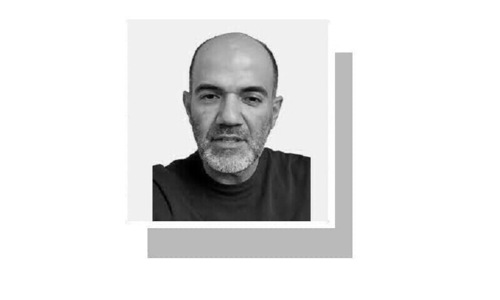 For Pakistan, the year 2009 will be difficult. What happens in 2009 will be determined by at least three things.
For Pakistan, the year 2009 will be difficult. What happens in 2009 will be determined by at least three things.
The authorities have control over only one of these, the first one. One, what the government does now to tackle the problems, many of them very difficult, the economy faces at this time. Two, what happens to the global economy, in particular to commodity markets. Three, what happens to the countries in the immediate neighbourhood. For obvious reason, the first of these factors is by far the most important.
The economic situation in 2009 could be even more difficult than was the case in 2008 if Islamabad does not adopt the policies that would simultaneously achieve a number of objectives. The most important of these is economic stabilisation which would reduce to sustainable levels both fiscal and balance of payments deficits. This is required if the country is to continue to draw upon the funds that have been pledged by the International Monetary Fund. It is also expected by some of the friendly countries who are prepared to help introduce some structural changes needed so that the economy frees itself from the roller coaster ride it has been on for several decades.
This is not the first time that Pakistan has faced a serious economic crisis. The country faced economic difficulties whenever the external situation turned unfavourable and capital flows on which the country depends so much, declined. It has been obvious for years that Pakistan needs to mobilise internally a significant proportion of the resources it needs to grow at a rate that would not increase the incidence of poverty or increase income inequality.
What is the rate of growth that should be aimed to achieve in order to ensure that the number of people living in poverty does not increase? The most important product of growth for a country such as Pakistan has to be employment generation. Because of the rapid increase in population in the three decades between the ‘sixties and the ‘nineties, some five million people now enter the workforce every year.
If they are not provided employment, they will join the already large pool of the unemployed and the underemployed. The main problem with the model of growth followed by the government of President Pervez Musharraf was that it did not factor in the need for employment generation in its economic policies. For about five years, from 2003 to 2007, the gross domestic product increased at an impressive rate of seven per cent a year. However, in spite of this high rate of growth, the economy did not produce enough jobs to reduce the rate of unemployment. In other words, what is needed is not only a high rate of GDP growth but also growth that is “inclusive”; economic expansion that benefits all segments and all areas of the economy.
There is some empirical evidence available from development institutions such as the World Bank that suggest that an economy in Pakistan’s situation should have its gross domestic product grow by at least three times the increase in population in order not to have the number of people living in absolute poverty increase. This means a rate of GDP growth of more than five per cent per year. For Pakistan, the rate is close to six per cent because of the fact that a number of its relatively more backward areas such as the tribal belt and the province of Balochistan are also politically restive.
The rate of growth for the economy in 2009 is hard to estimate given the level of uncertainty that surrounds economics, politics as well as the country’s relations with its neighbour, India. The government believes that it will be able to squeeze out of the economy a growth rate of between 4.5 and five per cent in 2009. This is optimistic. I would estimate the growth rate to be between 2.7 and three per cent unless the government adopts the right set of policies. .
The economic performance in 2009 will also depend on what happens to the prices of commodities, in particular that of oil and some agricultural products the country needs to import or export. It was the sharp increase in the price of oil that drained foreign exchange reserves in 2008. In the five-month period between mid-summer and late-autumn, the price of oil almost tripled, putting under tremendous strain the external accounts in a number of oil-importing developing countries, including Pakistan.
However, the trend has been reversed and now oil is selling at a price even below that in early 2007. But given the long-term demand and supply trends in oil, it would be wrong for policy makers to relax their efforts to reduce the dependence of the economy on imported fuel. This is particularly the case for power generation. There is need to have an energy policy in place that taps the country’s abundant domestic resources, in particular water and coal.
Islamabad will also need to deal with the enormous uncertainly that now surrounds the prospects of the global economy. What is most disturbing about the current global economic situation is that two developments that produced economic vibrancy in many parts of the world would most likely be reversed. Globalisation was characterised by rapid increase in international trade and increased flow of capital across international frontiers. Both are now under pressure. Pakistan has only a marginal role in the global trading system but even then its dependence on textiles makes it vulnerable if protectionism returns. What is of particular concern is that private capital flows have declined significantly. These were important. They were responsible for the Karachi Stock Exchange becoming one of the most dynamic in the world. It collapsed after a large amount of capital flew out of the country following the series of terrorist attacks in the country’s major cities.
There are several aspects to the predictions made about the future of the global economy. What is certain is that the recession in the industrial world, in particular in the United States, will deepen. What is also certain is that the entire growth in global economy will come from the developing world, particularly from Asia and within Asia from the giant Chinese and Indian economies. What this implies is that little by little the centre of gravity of the global economy is shifting towards Asia, in particular towards China and India. This means that in designing an economic strategy for the country, policy makers should take advantage of the fact that Pakistan is proximate to the area that is likely to become the centre of the evolving global economic system.
While the policies under which the IMF is providing assistance will constrain Islamabad, it should persuade the Washington based institution that growth must not be squeezed out of the economy; that the poor must be helped by the creation of employment opportunities particularly in the more backward parts of the country; and that trade must be oriented in the direction of new centres of economic power that are emerging in the global economy.














































Dear visitor, the comments section is undergoing an overhaul and will return soon.